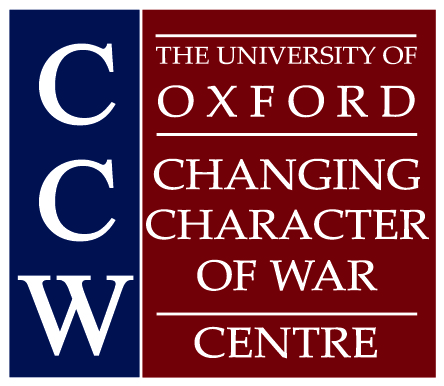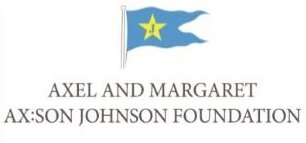When Russia’s military intervention in Syria started in September 2015, there was an acute sense among Moscow’s policy experts that the Russian thrust into Syria’s battlefield could be a game changer – not only for the course of that war, but also for Russia’s foreign policy and relationship with the West writ large. Two years later, Dmitry Trenin, Director of the Carnegie Moscow Center, has produced an authoritative account of what drives current Russian foreign policy in the Middle East generally, and specifically in Syria.
The author begins with a brief yet instructive historical chapter, but rather than proceeding chronologically, he offers a theme-based analysis of Moscow’s engagement with the region – focusing on “War”, “Diplomacy” and “Trade”. The book’s stated objective of providing ‘a clear and evidence-based view of Russia’s involvement in the Middle East and its impact on Moscow’s broader foreign relations’ (p. 7) is met succinctly and eloquently in this enjoyable read.
Overall, Trenin applauds Moscow’s strategy in the region, arguing that it ‘has demonstrated that a combination of a clear sense of objective, strong political will, area expertise and experience, resourceful diplomacy, a capable military, plus an ability to coordinate one’s actions with partners and situational allies in a very diverse and highly complex region can go a long way to help project power onto the top level’ (p. 134).
Trenin is especially persuasive in identifying the overarching drivers of Russia’s new activism in the Middle East, stressing its geopolitical dimension and pragmatism in particular. Proceeding from the premise that Moscow has ‘no interest, no resources, and no intention’ to supplant Washington as the principal actor or security provider in the Middle East (p. 2), Trenin shows why the military intervention in Syria has ultimately been a “preventative” war for Russia. After Gaddafi’s removal from power in Libya in 2011, the author argues, Syria turned into Russia’s “red line” against perceived US-backed regime change in the Middle East, North Africa and beyond.
Yet, while Western pundits frequently assert that Russia’s Syria policy has deliberately marginalised the West, Trenin makes a compelling case for the centrality of status recognition to Russian foreign-policy thinking: ‘Although cheered by some Russians’, he contends, ‘the apparent US demotion has never been the objective of the Kremlin’s policy. Rather, Moscow needed Washington at its side to witness and confirm Russia’s reappearance on the global stage as a great power’ (p. 82). In that context, Trenin also analytically embeds Russia’s Middle East policy within a broader reorientation in Russian foreign policy doctrine, which since 2014 has conceived of Russia ‘as a major single unit unto itself’ in a greater Eurasian neighbourhood, which seeks US ‘respect and cooperation’, rather than to ‘dislodge America’s influence’ (p. 138).
Further, Trenin convincingly exposes the shrewd pragmatism in Russia’s engagement with Middle Eastern actors, whether in its diplomatic dealings or pursuit of commercial gain. The chapter on diplomacy offers especially compelling analysis of the Kremlin’s pragmatic balancing acts in the region, in what are nine “mini case studies” of Russia “double-dating” players with inimical bilateral relationships, such as Turkey and the Kurds, or Iran and the GCC. The author concludes by endorsing the Russian approach as successful, arguing that ‘Russia does not ignore the Middle East’s treacherous divides: it knows that falling into them can be fatal. It seeks instead to straddle them … is busy promoting its own interests with all its partners, fully aware of their own interests’. (p. 112)
In that context, my only criticism of Trenin’s analysis is that it may underestimate the danger of a Russian “mission creep” in Syria, while overstating Moscow’s leverage over regional players. As of early 2018, Russia still maintains a sizeable military presence in Syria, has deployed hundreds of military police to various “de-escalation zones”, and is enabling a regime offensive in the restive Idlib province in Syria’s Northwest, while it is yet to deliver on a viable peace process that engages both the regime and opposition. Trenin himself admits that ‘military action is only effective as long as it furthers a general political strategy’ (p. 86). But while he argues that ‘there was a close connection between Russia’s military operation and its diplomatic activity’ (p. 86) in Syria, that diplomatic activity is arguably yet to bear fruit.
On a related point, the author could have given more than just a fleeting acknowledgement of Moscow’s limited influence over Damascus and Tehran. Arguing that Russia ‘will probably work for a Syria free from foreign military presence, except its own’ (p. 97), the book falls short of providing convincing evidence that Russia has the leverage necessary to achieve this objective. This shortcoming also slightly weakens what is an overall convincing argument about Russia’s “tightrope walk” between adversarial Middle Eastern players: while Trenin indeed succeeds in showing that Moscow ‘has managed to deal with countries and groups that have often been inimical to one another’, he is less convincing in demonstrating Russia’s capacity to ‘sometimes bring [these groups] together as a public good’ (p. 86). Indeed, an ability to talk to all opposing sides in a conflict does not automatically translate into successful mediation, absent credible carrots or stick that Moscow can use in order to elicit concessions from conflict parties.
Though Trenin’s assessment of Russian leverage in the Middle East could have been more critical, he has nonetheless produced an empirically rich and sober account, which could not be timelier in countering with nuance the oft-hysterical claims that there is a robust Russian-Iranian alliance, or that Moscow seeks to oust the US from the region. By bringing out the pragmatic thrust of Russian policy in the Middle East, and carefully dissecting its different drivers, Trenin offers clear answers to those who ask: “What is Russia up to in the Middle East?”
-----
Hanna Notte consults the Shaikh Group regarding their Syria Track II Dialogue Initiative on matters related to Russia, having just submitted her DPhil on Russian foreign policy in the Middle East at the University of Oxford (St. Antony’s College), from where she also received an MPhil in International Relations in 2014. She has held visiting research positions with the Carnegie Moscow Center and the Institute of Oriental Studies in Moscow, the IISS’ Middle East office in Manama, and the Konrad-Adenauer-Foundation’s Syria/Iraq office in Beirut. Her research interests focus on Russian foreign policy in the Middle East (especially Syria, Iraq and Iran) and Russian-US relations.
© Changing Character of War Centre. All rights reserved. Material in this publication is copyrighted under UK law. Individual authors reserve all rights to their work and material should not be reproduced without their prior permission. The views and opinions expressed in this article are those of the author and do not necessarily represent the views of the Changing Character of War Centre, or the University of Oxford.















